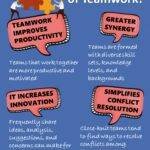
Activity What is My Name
What is My Name is a fast-paced and amazing team-building game where players are given name tags of a type of person. The goal is to figure out who you are by asking and answering questions about your name tag.
The game can help people understand how stereotypes can affect how others are treated.
By confronting stereotypes in both how people treat us and in the questions and answers used, the team can get a better sense of how we mistakenly see people as well as how it feels to be so narrowly defined.
On name tags or similar labels, write down people types, for example: doctor, athlete, nerd, disabled, wealthy, homeless, old woman, etc. Place these nametags on a team member’s back so that they cannot see what they are, but the rest of the group can.
For a set amount of time, the entire group should mingle, and ask and answer questions. They should treat each other according to the stereotypical way based on what kind of person they have been labeled.
Of course you can never ask what kind of person I am.
Each team member can use that treatment, as well as the answers to questions, to figure out what the label is. As each team member figures out who they are, they can exit the game and let the rest continue.
This activity not only helps people reflect and understand how stereotypes can affect the way others are treated, but it can also be used as an icebreaker for people who don’t know each other well.
Moment of Reflection
- What were some of the behaviors you observed toward yourself that led you to think about the type of person written on your label? Why?
- What were the responses or words you received that led you to think about the type of person written on your label? Why?
- How long did it take you to realize the type of person you were?
- What were some specific behaviors you demonstrated toward others after reading their labels?
- In the interactions, did you feel that you were an important person, an undervalued person, or an ordinary person?
- How did you feel they treated you?
- What behaviors did you observe during the activity that caught your attention? Why?
- How do stereotypes influence thoughts and behaviors?
- How is this activity similar to the interactions present in everyday life? briefly explain
The topics of this publication: integration, diversity, reflection, critical thinking, interactions, empathy, stereotypes, observation skills, emotions, active listening


